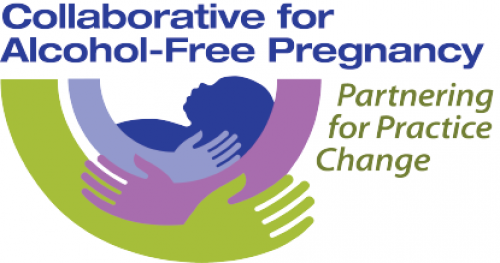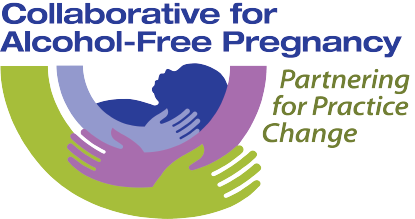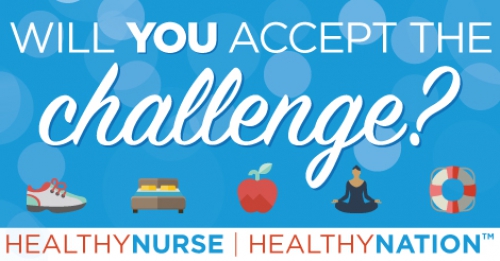Healthy Nurse, Healthy Nation™ Blog - September Is FASD Awareness Month - Fetal Alcohol What?
Published
Marilyn Pierce-Bulger, APRN, Owner/Manager, FASDx Services LLC and Board of Director member, Alaska Center for FASDs, Anchorage, AK
Beth Kelsey, EdD, APRN, WHNP-BC, FAANP, Director of Publications, National Association of Nurse Practitioners in Women’s Health
Catherine Ruhl, MS, CNM, Director, Women’s Health Programs, Association of Women’s Health, Obstetric and Neonatal Nurses
Becky Porter, MS, LPC, Project Manager, Center for Behavioral Health Research & Services, University of Alaska Anchorage
All on behalf of the CDC’s Collaborative for Alcohol Free Pregnancy: Partnering for Practice Change

As a nurse, you are one of the most trusted health care professionals in the U.S. Are you informed about a common yet preventable disability? Have you heard of fetal alcohol spectrum disorders (FASDs)? A recent study suggested potentially 1 in 20 American school children may have this disability. FASDs are a range of lifelong effects resulting from prenatal alcohol exposure. The disability manifests as developmental delays and impairments affecting attention, learning, memory, self-regulation, and social/adaptive skills. FASDs are often unrecognized or misdiagnosed and, consequently, interventions may not match an individual’s needs. Many individuals with FASDs cannot reliably access their abilities consistently which creates a host of secondary social and behavioral problems. Fetal alcohol syndrome (FAS), the most involved condition among the continuum of FASDs, is only one diagnosis along the spectrum and is less common than the other impacts. Typical facial features of FAS (e.g., small eye opening, flat philtrum, thin upper lip) are impacted by alcohol exposure during the third week of gestation. If alcohol exposure during pregnancy is outside of that window, a person with an FASD may have no tell-tale facial features but still experience lasting deficits from the disability.
As a teratogen, alcohol has the potential to disrupt fetal brain development throughout an entire pregnancy. Misconceptions and misinformation about ‘safe times or amounts to drink while pregnant’ abound. There is no known safe amount, no safe time, and no safe type of alcohol during pregnancy because we cannot predict how any mother/baby pair will react to the teratogen.
Researchers recently determined that fetal blood alcohol content is the same as the mother’s with the duration of the dose likely to be longer due to concentration in the amniotic fluid. The fetal liver cannot process alcohol and must rely on the maternal system for excretion. There is no safe teratogen use in pregnancy!
According to the CDC, 1 in 10 pregnant women aged 18-44 years reports alcohol use and about one third of pregnant women who use alcohol report binge drinking in the past 30 days. Researchers have also established that binge drinking patterns increase health risks and that of an unborn child. CDC provides more information about binge drinking here. Women’s alcohol use has steadily increased over the past 30 years. This trend combined with high unintended pregnancy rates makes the likelihood of ongoing harm to children of great concern.
What to do? Many women like having a few drinks when they socialize with friends. We get that! But please consider advising patients about the following:
Find this helpful? Consider sharing it with a friend by clicking on the social media icons on the left side of this page. Don't forget to tag us with #HealthyNurse. Find us on Facebook, Twitter, or Instagram.
Reviewed 12/6/22

Have you joined the Healthy Nurse, Healthy Nation (HNHN) Grand Challenge yet? Join us today!
Beth Kelsey, EdD, APRN, WHNP-BC, FAANP, Director of Publications, National Association of Nurse Practitioners in Women’s Health
Catherine Ruhl, MS, CNM, Director, Women’s Health Programs, Association of Women’s Health, Obstetric and Neonatal Nurses
Becky Porter, MS, LPC, Project Manager, Center for Behavioral Health Research & Services, University of Alaska Anchorage
All on behalf of the CDC’s Collaborative for Alcohol Free Pregnancy: Partnering for Practice Change

As a nurse, you are one of the most trusted health care professionals in the U.S. Are you informed about a common yet preventable disability? Have you heard of fetal alcohol spectrum disorders (FASDs)? A recent study suggested potentially 1 in 20 American school children may have this disability. FASDs are a range of lifelong effects resulting from prenatal alcohol exposure. The disability manifests as developmental delays and impairments affecting attention, learning, memory, self-regulation, and social/adaptive skills. FASDs are often unrecognized or misdiagnosed and, consequently, interventions may not match an individual’s needs. Many individuals with FASDs cannot reliably access their abilities consistently which creates a host of secondary social and behavioral problems. Fetal alcohol syndrome (FAS), the most involved condition among the continuum of FASDs, is only one diagnosis along the spectrum and is less common than the other impacts. Typical facial features of FAS (e.g., small eye opening, flat philtrum, thin upper lip) are impacted by alcohol exposure during the third week of gestation. If alcohol exposure during pregnancy is outside of that window, a person with an FASD may have no tell-tale facial features but still experience lasting deficits from the disability.
As a teratogen, alcohol has the potential to disrupt fetal brain development throughout an entire pregnancy. Misconceptions and misinformation about ‘safe times or amounts to drink while pregnant’ abound. There is no known safe amount, no safe time, and no safe type of alcohol during pregnancy because we cannot predict how any mother/baby pair will react to the teratogen.
Researchers recently determined that fetal blood alcohol content is the same as the mother’s with the duration of the dose likely to be longer due to concentration in the amniotic fluid. The fetal liver cannot process alcohol and must rely on the maternal system for excretion. There is no safe teratogen use in pregnancy!
According to the CDC, 1 in 10 pregnant women aged 18-44 years reports alcohol use and about one third of pregnant women who use alcohol report binge drinking in the past 30 days. Researchers have also established that binge drinking patterns increase health risks and that of an unborn child. CDC provides more information about binge drinking here. Women’s alcohol use has steadily increased over the past 30 years. This trend combined with high unintended pregnancy rates makes the likelihood of ongoing harm to children of great concern.
What to do? Many women like having a few drinks when they socialize with friends. We get that! But please consider advising patients about the following:
- If you are planning a pregnancy, stop using alcohol now to prevent potential for alcohol exposure before pregnancy confirmation.
- If you drink alcohol and are of reproductive age, sexually active, and not wanting to be pregnant, choose a highly effective type of birth control to prevent unintended pregnancy and potential prenatal alcohol exposure.
- If you are planning a pregnancy and think you may have trouble not using alcohol, seek help before getting pregnant.
Find this helpful? Consider sharing it with a friend by clicking on the social media icons on the left side of this page. Don't forget to tag us with #HealthyNurse. Find us on Facebook, Twitter, or Instagram.
Reviewed 12/6/22

Have you joined the Healthy Nurse, Healthy Nation (HNHN) Grand Challenge yet? Join us today!
Blog Safety
09/26/2018 5:37pm CDT



Post a Comment or Question